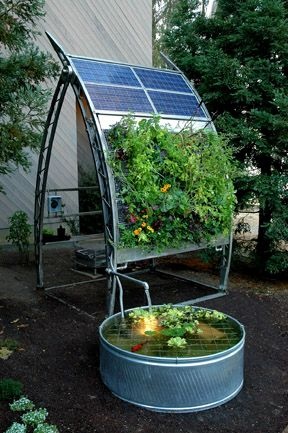Sun Curve Design Challenge Activity
The Sun Curve Challenge
ISKME announces the Sun Curve Design Challenge, a partnership with INKA, the creator of the Sun Curve aquaponic garden and laboratory and ISKME's OER Commons project, to challenge teachers and students to produce new OER materials and incorporate green design thinking into the classroom. More information on the Sun Curve Design Challenge is available here: http://wiki.oercommons.org/index.php/Sun_Curve_Challenge

Discuss the Design Challenge
The Sun Curve Design Challenge: How can you grow food using sustainable processes, following the design principles
- The design must meet a need for their school community
- The design needs to be made of affordable/recycled/repurposed materials
- The design must support plants and animal life (insects, fish)
- The design must use renewable energy (wind, solar)
The Design Process
Present the design process used by engineers.
- Identify the Challenge: To grow your own food using sustainable processes.
- Research and Brainstorm
- Design a Solution
- Test Ideas
- Evaluate
- Build It
Research & Brainstorm Design Ideas
Participants identified the challenge and conduct research on the needs of their local community. Now they have 15-20 minutes to brainstorm ideas and design ideas that address the design challenge in groups of 2-3.
Select Prototyping Materials
The groups will each be given easel pad paper, markers, pencils, scissors, and a container with molding clay, pipe cleaners, different shaped craft sticks, pieces of foam and plastic, cardboard, and small cups to plan and build design ideas.
Build a Prototype
The groups each choose one design solution to build a 3-D physical model of using the prototyping materials.
Present Prototype & Get Feedback
Participants give their prototype a title and short description. present them and answer questions.
Refine Prototype
Incorporate feedback into prototype and modify.
Pilot Planning
Brainstorm and document a plan to pilot the prototype in the real world.
Present Design Idea
Create a visual representation of their design idea via storytelling. Tell the story of their user and their needs, how they addressed their needs, what they designed, how they designed it, and how they plan to implement their design. Include their research findings and follow story plot structure.